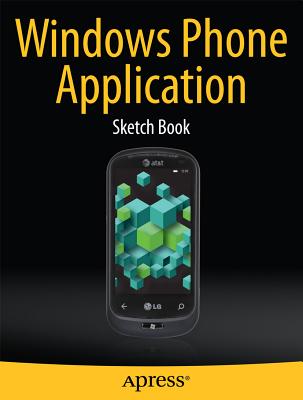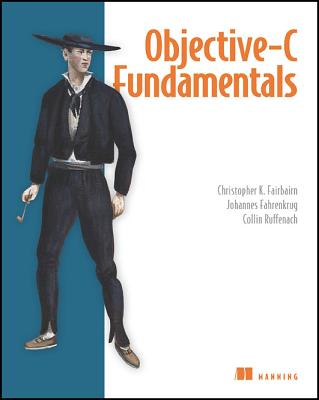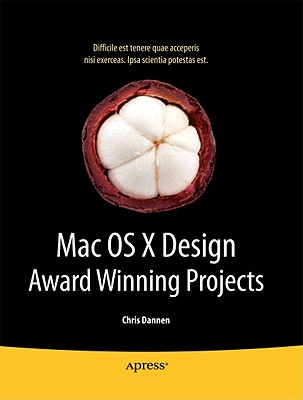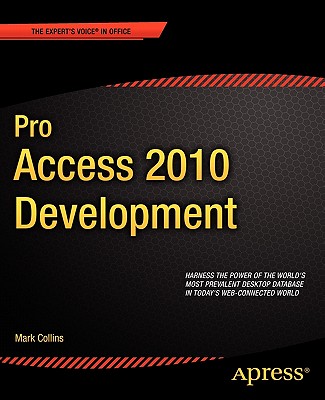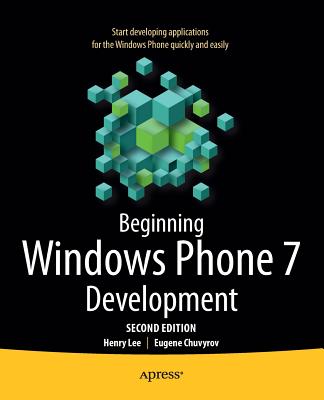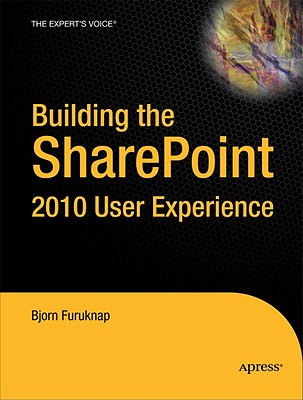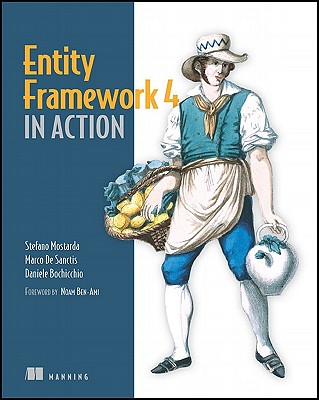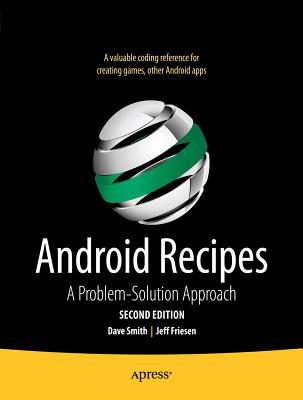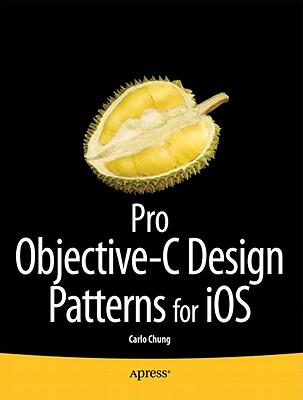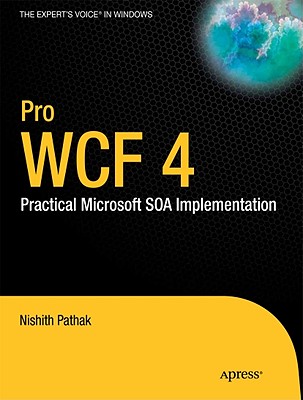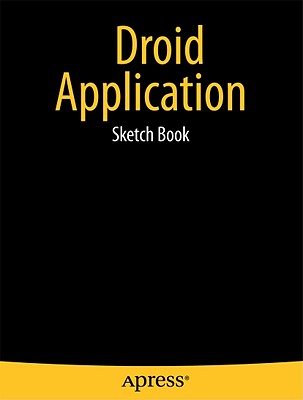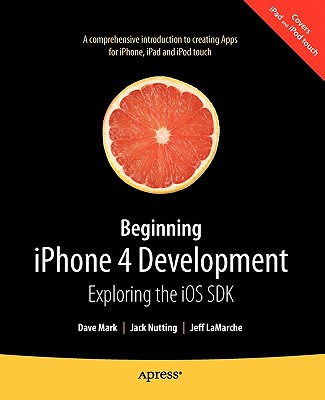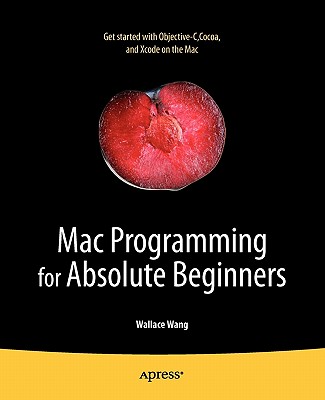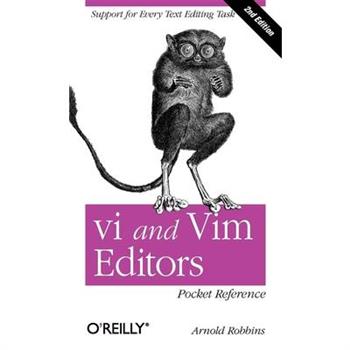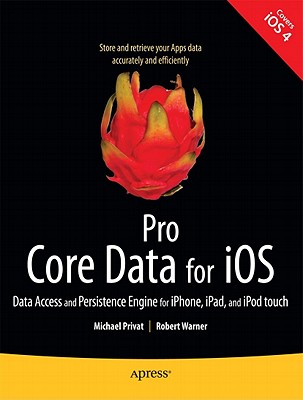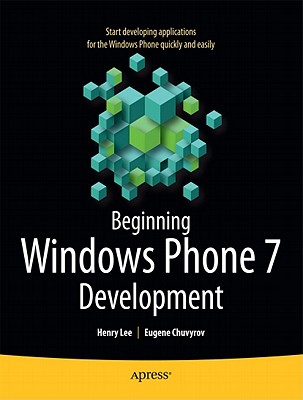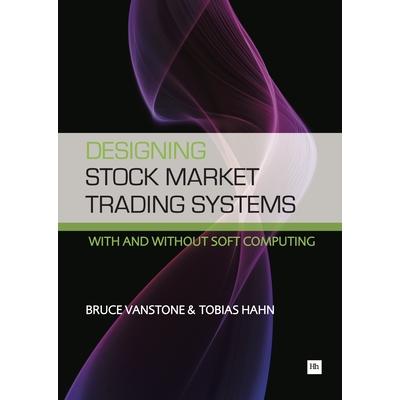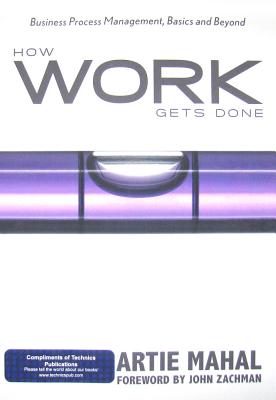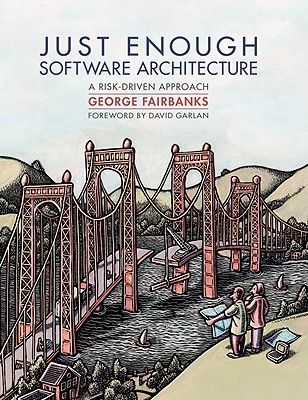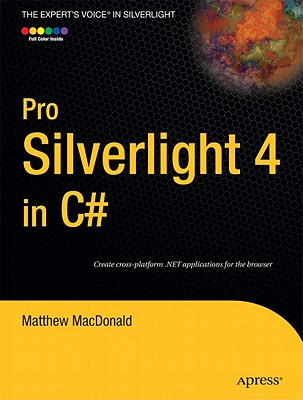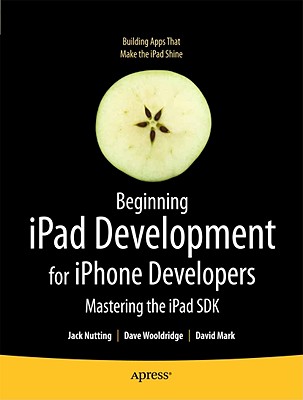Windows Phone Application Sketch Book
Think you have the next great Windows Phone app idea? The Windows Phone Application Sketch Book is an essential tool for any aspiring Windows Phone developer. This sketch book makes it easy to centralize and organize your ideas, featuring enlarged Windows Phone templates to write on. Professionally printed on high-quality paper, it has a total of 150 gridded templates for you to draft ideas and doodle designs while providing ample room to make notes and document the app name and screen name. This book is an invaluable tool for bringing your next great Windows Phone app idea to life!
Objective C for the Iphone
SummaryObjective-C Fundamentals is a hands-on tutorial that leads you from your first line of Objective-C code through the process of building native apps for the iPhone using the latest version of the SDK. You'll learn to avoid the most common pitfalls, while exploring the expressive Objective-C language through numerous example projects.About the TechnologyThe iPhone is a sophisticated device, and mastering the Objective C language is the key to unlocking its awesome potential as a mobile computing platform. Objective C's concise, rich syntax and feature set, when matched with the iPhone SDK and the powerful Xcode environment, offers a developers from any background a smooth transition into mobile app development for the iPhone.About the BookObjective-C Fundamentals guides you gradually from your first line of Objective-C code through the process of building native apps for the iPhone. Starting with chapter one, you'll dive into iPhone development by building a simple game that you can run immediately. You'll use tools like Xcode 4 and the debugger that will help you become a more efficient programmer. By working through numerous easy-to-follow examples, you'll learn practical techniques and patterns you can use to create solid and stable apps. And you'll find out how to avoid the most common pitfalls.No iOS or mobile experience is required to benefit from this book but familiarity with programming in general is helpful. Purchase of the print book comes with an offer of a free PDF, ePub, and Kindle eBook from Manning. Also available is all code from the book. What's InsideObjective-C from the ground upDeveloping with Xcode 4Examples that work unmodified on iPhoneTable of ContentsPART 1 GETTING STARTED WITH OBJECTIVE-CBuilding your first iOS applicationData types, variables, and constantsAn introduction to objectsStoring data in collectionsPART 2 BUILDING YOUR OWN OBJECTSCreating classesExtending classesProtocolsDynamic typing and runtime type informationMemory managementPART 3 MAKING MAXIMUM USE OF FRAMEWORK FUNCTIONALITYError and exception handlingKey-Value Coding and NSPredicateReading and writing application dataBlocks and Grand Central DispatchDebugging techniques
Parallel Programming With Microsoft Visual Studio 2010
Pro Google Web Toolkit
The Google Web Toolkit (GWT) is a new easy way for Java developers to build Ajax web applications, using a simple system of "UI widgets," and it's gained a lot of popularity in the community. Google are pushing it very eagerly. There are a couple on Google Web Toolkit already, but this one goes further, teaching the ins and outs of developing with the Google Web Toolkit, before taking readers up to a higher level, including chapters on how to integrate GWT user interfaces with enterprise applications. It also includes reference sections at the end so readers can look up details quickly and easily.
MAC OS X Design Award Winning Projects
Mac OS X Design Award-Winning Projects profiles developers who have received the prestigious Apple Design Award for Mac OS X app excellence. You'll learn all about what makes these apps truly standout, including explanations of great user interface design and implementation, as well as the code under the hood that makes these the most responsive, intuitive, useful, and just plain fun Mac OS X apps. Insightful profiles of the winning developers Detailed explanations of the technical wizardry that makes these apps tick Full-color screenshots and copious, downloadable code snippets to get you started building the next Mac OS X Design Award-Winning Apps What you'll learn How the best Mac OS X apps are built How detail-oriented, semi-obsessive designers create great-looking interfaces that go beyond mere user-friendliness How caffeine-addicted, sugar-fortified programmers optimize every line of Objective-C and squash the most deeply hidden bugs How inspiration strikes at unlikely times and places How to plan for success by learning from the most successful Mac OS X app developers Who is this book for? All Mac OS X developers seeking enlightenment from the recognized masters.
Specification by Example
Summary Specification by Example is an emerging practice for creating software based on realistic examples, bridging the communication gap between business stakeholders and the dev teams building the software. In this book, author Gojko Adzic distills interviews with successful teams worldwide, sharing how they specify, develop, and deliver software, without defects, in short iterative delivery cycles. About the Technology Specification by Example is a collaborative method for specifying requirements and tests. Seven patterns, fully explored in this book, are key to making the method effective. The method has four main benefits: it produces living, reliable documentation; it defines expectations clearly and makes validation efficient; it reduces rework; and, above all, it assures delivery teams and business stakeholders that the software that's built is right for its purpose. About the Book This book distills from the experience of leading teams worldwide effective ways to specify, test, and deliver software in short, iterative delivery cycles. Case studies in this book range from small web startups to large financial institutions, working in many processes including XP, Scrum, and Kanban. This book is written for developers, testers, analysts, and business people working together to build great software. Purchase of the print book comes with an offer of a free PDF, ePub, and Kindle eBook from Manning. Also available is all code from the book. What's Inside Common process patterns How to avoid bad practices Fitting SBE in your process 50+ case studies =============================================== Table of Contents Part 1 Getting started Part 2 Key process patterns Part 3 Case studies Key benefits Key process patterns Living documentation Initiating the changes Deriving scope from goals Specifying collaboratively Illustrating using examples Refining the specification Automating validation without changing specifications Validating frequently Evolving a documentation system uSwitch RainStor Iowa Student Loan Sabre Airline Solutions ePlan Services Songkick Concluding thoughts
Pro Access 2010 Development
Pro Access 2010 Development is a fundamental resource for developing business applications that take advantage of the features of Access 2010 and the many sources of data available to your business. In this book, you'll learn how to build database applications, create Web-based databases, develop macros and Visual Basic for Applications (VBA) tools for Access applications, integrate Access with SharePoint and other business systems, and much more. Using a practical, hands-on approach, this book will take you through all the facets of developing Access-based solutions, such as data modeling, complex form development, and user interface customizations. You'll then deploy your solution to the web and integrate it with other external data sources. This book is full of handy tricks to help you get the most out of what Access has to offer, including its comprehensive set of features and tools for collecting, using, and acting on business data, whether your data is in Access or stored on another platform. You'll also see how to smoothly integrate your applications with SQL Server databases and other Office programs, such as Outlook.
Beginning Windows Phone 7 Development
Microsoft's Windows Phone 7 handsets have injected a new vibrancy into the smartphone marketplace and provided bold new opportunities for the Microsoft development community. Now in its second edition, Beginning Windows Phone 7 Development has been written to help you identify those opportunities and to learn the skills you'll need to harness them. It covers the very latest developments in the field, including the extended APIs offered in Microsoft's automatic platform update, so you'll have timely, accurate information at your fingertips. Beginning Windows Phone 7 Development, Second Edition starts with the basics, walking you through the process of downloading and setting up the right development tools, including Visual Studio, Expression Blend, Silverlight SDK, and Windows Phone SDK. It then takes you step-by-step though the development process as you build and deploy a working application, complete with a sophisticated user interface. Finally, you'll receive step-by-step instructions on selling your applications through the Windows Phone Marketplace.
Building the Sharepoint 2010 User Experience
This book dives deep into the details of how the SharePoint user experience is built. Using tools available to all developers, you'll dissect and rebuild a SharePoint 2010 site--all the way from the out-of-the-box default to your very own customized user experience. Few IT books cover the depth required to truly master a subject. This book breaks this pattern, and goes to places where very few SharePoint developers have gone before. It provides a "take no prisoners, brake for no one" approach that gets you to the information you really need to know. You might ask why you would want to modify all this when you get a perfectly capable interface right out of the box? And why go all the way to the core when all you want to do is fix up some CSS? The answer is that a solid understanding of the SharePoint architecture will enable you to learn the capabilities of SharePoint as a platform. This, in turn, will allow you to create user experiences that will increase the value of the solutions you create, as well as work better within the specific scenarios you encounter in your day-to-day work. And that, of course, leads to SharePoint happiness and joy--and we all want that, don't we? After reading this book, you will be left with a deep understanding of how the SharePoint user experience is built. You will also have gained practical and applicable knowledge that your projects and customers will love. And you will have had a good time learning as well. So while we do go deeper into the material than other books, we will not leave our sense of humor behind or be afraid to enjoy getting better at what we do. What you'll learn Learn the tools you need to create effective and highly tailored user interfaces and experiences in SharePoint 2010. Dissect an out-of-the-box site to learn how every user experience element is built. Master the core functions of sites, lists, content types, and fields. Build a site from scratch using tools available to everyone. Speed up your development time by using tools, tricks, and tips. See how your new skills can be applied to everyday tasks with simple exercises. Who is this book for? This book is for SharePoint developers who want to learn how to work with designers and other developers to create custom and tailored user experiences, including custom forms, content types, lists, fields, pages, and navigation that will better match your project's requirements.
Entity Framework 4 in Action
SummaryEntity Framework 4 in Action is an example-rich tutorial for .NET developers with full coverage of EF 4 features. The book begins with a review of the core ideas behind the ORM model and shows through detailed examples and larger case studies how Entity Framework offers a smooth transition from a traditional ADO.NET approach.About the TechnologyEntity Framework builds on the ADO.NET persistence model and the language features of LINQ to create a powerful persistence mechanism that bridges the gap between relational databases and object-oriented languages.About the BookEntity Framework 4 in Action is an example-rich tutorial that helps .NET developers learn and master the subject. It begins by explaining object/relational mapping and then shows how you can easily transition to EF from ADO.NET. Through numerous focused examples and two larger case studies, the book unfolds the EF story in a clear, easy-to-follow style. Infrastructure and inner workings of EF are discussed when you need them to understand a particular feature.This book is written for .NET developers. Knowledge of ADO.NET is helpful but not required. Purchase of the print book comes with an offer of a free PDF, ePub, and Kindle eBook from Manning. Also available is all code from the book. What's InsideFull coverage of EF 4 featuresLayer separation, Data Layer, and Domain ModelBest practicesTable of ContentsPART 1 REDEFINING YOUR DATA-ACCESS STRATEGYData access reloaded: Entity FrameworkGetting started with Entity FrameworkPART 2 GETTING STARTED WITH ENTITY FRAMEWORKQuerying the object model: the basicsQuerying with LINQ to EntitiesDomain model mappingUnderstanding the entity lifecyclePersisting objects into the databaseHandling concurrency and transactionsPART 3 MASTERING ENTITY FRAMEWORKAn alternative way of querying: Entity SQLWorking with stored proceduresWorking with functions and viewsExploring EDM metadataCustomizing code and the designer
Android Recipes
Android continues to be one of the leading mobile OS and development platforms driving today's mobile innovations and the apps ecosystem. Android appears complex, but offers a variety of organized development kits to those coming into Android with differing programming language skill sets. Android Recipes: A Problem-Solution Approach guides you step-by-step through a wide range of useful topics using complete and real-world working code examples. In this book, you'll start off with a recap of Android architecture and app fundamentals, and then get down to business and build an app with Google's Android SDK at the command line and Eclipse. Next, you'll learn how to accomplish practical tasks pertaining to the user interface, communications with the cloud, device hardware, data persistence, communications between applications, and interacting with Android itself. Finally, you'll learn how to leverage various libraries and Scripting Layer for Android (SL4A) to help you perform tasks more quickly, how to use the Android NDK to boost app performance, and how to design apps for performance, responsiveness, seamlessness, and more. Instead of abstract descriptions of complex concepts, in Android Recipes, you'll find live code examples. When you start a new project, you can consider copying and pasting the code and configuration files from this book, then modifying them for your own customization needs. This can save you a great deal of work over creating a project from scratch!
Pro Android 3
Pro Android 3 starts with the basics, giving you a firm foundation in Android development. It then builds on this foundation to teach you how to build real-world and fun mobile applications using the new Android 3.0 SDK. This book covers advanced concepts in detail including maps, geocoding, services, live folders, drag and drop, touchscreens, and the new Android 3.0 features: fragments and ActionBar. Pro Android 3 is uniquely comprehensive: it covers sensors, text to speech, OpenGL, live widgets, search, and the audio and video APIs. Using the code-heavy tutorials and expert advice, you'll quickly be able to build cool mobile apps and run them on dozens of Android-based smartphones. You'll explore and use the Android APIs, including those for media, sensors, and long-running services. And you'll check out what's new with Android 3.0, including the improved UI across all Android platforms, drag and drop, fragment dialogs, and more, giving you the knowledge to create stunning, cutting-edge apps, while keeping you agile enough to respond to changes in the future.
Pro Objective-C Design Patterns for iOS
It's time to capitalize on your mastery of Cocoa with Pro Objective-C Design Patterns for iOS. You've developed apps that impressed and performed, and now you're ready to jump into development practices that will leave you with more effective, efficient, and professional level apps. This book is the element you need to make the jump from journeyman to master. All too often, developers grind through building good apps on willpower and a vigorous focus on code development, leaving them unaware of and unable to benefit from the underlying structural and functional design patterns. Pro Objective-C Design Patterns for iOS will teach you those design patterns that have always been present at some level in your code, but were never recognized, acknowledged, or fully utilized. Implementation of specific pattern approaches will prove their value to any developer working in the iOS application arena. You'll learn to master classic patterns like singleton, abstract factory, chain of responsibility, and observer. You'll also discover less well-known but useful patterns like memento, composite, command, and mediator.
Developing C# Apps for iPhone and iPad Using MonoTouch
Developing C# Applications for iPhone and iPad using MonoTouch shows you how to use your existing C# skills to write apps for the iPhone and iPad. Fortunately, there's MonoTouch, Novell's .NET library that allows C# developers to write C# code that executes in iOS. Furthermore, MonoTouch allows you to address all the unique functions of the iPhone, iPod Touch, and iPad. And the big plus: You needn't learn any Objective-C to master MonoTouch! Former Microsoft engineer and published app-store developer Bryan Costanich shows you how to use the tools you already know to create native apps in iOS using C# and the .NET Base Class Libraries. The magic is in Novell's implementation of Apple's Cocoa libraries in MonoTouch. You'll master the same elegant and rich Cocoa environment, but without the need to learn a new programming language. Developing C# Applications for iPhone and iPad using MonoTouch takes you from your first "Hello, World" example through the major APIs and features of iOS. The coverage is comprehensive and makes use of frequent examples, complete with sample code you can download and reuse to create your own powerful and playful apps.
Pro Visual Studio.Net
This book reveals and demystifies the product to enable programmers to do their job more quickly and with fewer errors. All the Authors are well known in each field of .NET development and lever their hands-on experience of making the tool work in the real world. Programmers will understand how to tweak this environment to get the very best out of it and learn by seeing practical tasks put into, and through Studio, to get the best results.
Pro WCF 4
Pro WCF 4.0: Practical Microsoft SOA Implementation is a complete guide to Windows Communication Foundation from the service-oriented architecture (SOA) perspective, showing you why WCF is important to service-oriented architecture and development. This book provides deep insight into the functionality of WCF, which shipped with .NET 4.0-like service discovery, routing service, simplified configuration, and other advanced features. Included in this title are informative examples that will aid the reader in understanding and implementing these important additions. This book also covers the unified programming model, reliable messaging, security, and the peer-to-peer programming model. You'll also learn how to move your current .NET remoting and web service applications to WCF, and how to integrate those applications with WCF 4. This book offers genuine insight into solving real enterprise problems using WCF and .NET 4.0.
Pro Expression Blend 4
Pro Expression Blend 4 is for .NET developers and graphical artists who want to learn the ins and outs of the Expression Blend integrated development environment. You may know already that this tool can be used to build Windows Presentation Foundation (WPF), Silverlight, and Windows Phone 7 applications; however, this book will take you well beyond the basics and provide you with a detailed examination of key Blend topics, including workspace customization, graphics, layout, styles, themes, data binding, and the use of SketchFlow, giving you an excellent understanding of the Blend product and what it can do for you. Over the course of these eight chapters, you will learn numerous techniques to simplify the authoring of XAML using Blend. These include: Transforming a vector graphic into a custom control template with a few clicks of the mouse Generating complex animations using an integrated timeline editor Visually designing interactive data templates Creating prototypes (via SketchFlow) that can be transformed into production-level code Throughout Pro Expression Blend 4, you'll work with both Blend and .NET code to finalize fully-functional projects that will provide both valuable insights and a sound foundation for your future WPF and Silverlight projects. Each chapter will give you ample opportunity to build .NET software using Blend. However, this is not a programming book, per se. While some examples will require a manageable amount of C# code, this book is squarely focused on helping you gain mastery over the numerous tools, editors, designers, and wizards of the Microsoft Expression Blend IDE.
Droid Application Sketch Book
Think you have the next great DROID app idea? The DROID Application Sketch Book is an essential tool for any aspiring Android developer. This sketch book makes it easy to centralize and organize your ideas, featuring enlarged DROID templates to write on. Professionally printed on high-quality paper, it has a total of 150 gridded templates for you to draft ideas and doodle designs while providing ample room to make notes and document the app name and screen name. Its lay-flat binding and perforated pages make it flexible and ideal for various uses. This book is an invaluable tool for bringing your next great Android app idea to life!
Cosmic Function Points
Designed to conform to the ISO/IEC standard 14143, the Common Software Measurement International Consortium (COSMIC) Function Point method has become the major estimation technique based on international standards for building software-intensive systems. COSMIC Function Points: Theory and Advanced Practices supplies a cutting-edge look at current and emerging practices in the international software measurement community.The editors have assembled an international panel of experts who detail the steps for measuring the functional size of software and developing project estimates with improved accuracy. They explain how to evaluate and compare systems to improve software reuse and development. Touching on the essential aspects of the next generation of functional size measurement methods, the book delineates best estimation and measurement practices as well as the development of benchmarks for quality improvement, including Six Sigma.This complete resource covers software measurement and estimation methods and practices for embedded systems, business applications, communications software, and control systems. Each chapter supplies the practical understanding required to create, implement, standardize, distribute, and adapt functional size measurement and project estimation to virtually any software context.Praise for: ... an excellent overview ... provides a strong knowledge background for both practitioners and researchers. ... With its broad background, it is useful for practically implementing and successfully adapting other functional sizing methods ... . The COSMIC function point techniques presented in this book will help you to implement, master, and improve your estimation process.-Christof Ebert, Managing Director, Vector Consulting Services
Beginning iPhone 4 Development
Beginning iPhone 4 Development is here! The authors of the bestselling Beginning iPhone 3 Development are back, with the same excellent material completely updated for iOS 4 and written from the ground up using the latest version of Apple's Xcode 3. All source code has been updated to use the latest Xcode templates and current APIs, and all-new screenshots show Xcode 3 in action. Beginning iPhone 4 Development is a complete course in iOS 4 apps development. You'll master techniques that work on iPhone, iPad, and iPod touch. We start with the basics, showing you how to download and install the tools you'll need, and how to create your first simple application. Next you'll learn to integrate all the interface elements iOS users have come to know and love, such as buttons, switches, pickers, toolbars, and sliders. You'll master a variety of design patterns, from the simplest single view to complex hierarchical drill-downs. The confusing art of tablebuilding will be demystified, and you'll learn techniques to save and retrieve your data using SQLite, iPhone's built-in database management system and Core Data, the standard for persistence that Apple brought to iOS with the release of SDK 3. And there's much more! You'll learn to draw using Quartz 2D and OpenGL ES, add multitouch gestural support (pinches and swipes) to your applications, and work with the camera, photo library, accelerometer, and built-in GPS. You'll discover the fine points of application preferences and learn how to localize your apps for multiple languages. You'll also learn how to use the new concurrency APIs included in iOS 4, and make robust multithreaded applications using Grand Central Dispatch. The iPhone 4 update to the best-selling and most recommended book for Cocoa touch developers Written in an accessible, easy-to-follow style Full of useful tips and techniques to help you become an iOS pro NOTE: For iPhone 4S or iOS 5 apps development, please instead check out the next edition of this book, Beginning iOS 5 Development - now available.
Mac Programming for Absolute Beginners
Want to learn how to program on your Mac? Not sure where to begin? Best-selling author Wallace Wang will explain how to get started with Cocoa, Objective-C, and Xcode. Whether you are an experienced Windows coder moving to the Mac, or you are completely new to programming, you'll see how the basic design of a Mac OS X program works, how Objective-C differs from other languages you may have used, and how to use the Xcode development environment. Most importantly, you'll learn how to use elements of the Cocoa framework to create windows, store data, and respond to users in your own Mac programs. If you want to learn how to develop apps with Cocoa, Objective-C, and Xcode, this book is a great first step. Here are just a few of the things you'll master along the way: Fundamental programming concepts aided by short, easy-to-understand examples How to use Xcode and related programming tools to save time and work more efficiently A firm understanding of the basics of Objective-C and how it compares to other languages you might know How to create simple apps using the Cocoa framework How to easily design, write, test, and market your finished program With this book and your trusty Mac, you're well on your way to transforming your Mac app ideas into real applications.
vi and Vim Editors Pocket Reference
Many Unix, Linux, and Mac OS X geeks enjoy using the powerful, platform-agnostic text editors vi and Vim, but there are far too many commands for anyone to remember. Author Arnold Robbins has chosen the most valuable commands for vi, Vim, and vi's main clones璽 vile, elvis, and nvi璽 and packed them into this easy-to-browse pocket reference. You'll find commands for all kinds of editing tasks, such as programming, modifying system files, and writing and marking up articles. This second edition includes: Command-line options vi commands and set options Input mode shortcuts Substitution and regular expressions ex commands and options Initialization and recovery Enhanced tags and tag stacks A greatly expanded section on Vim commands and options Additional features in vile, elvis, and nvi Internet resources for vi A full index
Pro ASP.NET SharePoint 2010 Solutions
You've run into this issue numerous times. You are developing an ASP.NET application, and you need to incorporate functionality that comes pre-packaged in SharePoint. Wikis, blogs, document management, user authentication, access management--common needs across a variety of solutions. Without guidance and examples, interacting with underlying SharePoint components can be challenging, and working with the different SharePoint APIs is complicated. This book will introduce you to a variety of techniques to master the art of developing ASP.NET applications that are built upon a SharePoint foundation. With these techniques you can start using SharePoint as a development platform to enhance and complement your ASP.NET development. You'll explore: Integration with SharePoint components The SharePoint/.NET/IIS implementation Configuration management Code Access Security Feature packaging Proper use of SharePoint APIs Advanced deployment techniques Pro ASP.NET Sharepoint 2010 walks you through all of the steps needed to successfully build and deploy ASP.NET solutions within the SharePoint platform. You'll then be able to greatly enhance your applications and build unique solutions that are a mixture of SharePoint and ASP.NET.
Pro Core Data for iOS
The power of Core Data allows iOS developers to efficiently store and retrieve application data using familiar object-oriented paradigms. Pro Core Data for iOS explains both how and why to use Core Data for data storage, from simple to advanced techniques. Covering common and advanced persistence patterns, this book prepares any iOS developer to store and retrieve data accurately and proficiently. Lots of iOS development books touch on Core Data, taking you through a few mainstream use cases for storing and retrieving data in your iOS applications. In Pro Core Data for iOS, however, we take you further into Core Data and show you how to leverage the power of this data framework. After reading this book, you'll be able to answer all of these questions: What are all the parts of Core Data, and how do they interact? How do I create my own custom store? Should I use plain NSManagedObject instances or custom classes? How do I undo and redo Core Data actions? How do I filter, sort, and aggregate data? What is "faulting," and why should I care? Suppose I want to change my data model; how do I migrate my users' data? Pro Core Data for iOS delves into these and other Core Data questions. With explanations, diagrams, code samples, and working explanations, this book will make you a Core Data pro!
Windows Phone 7 Game Development
Windows Phone 7 is a powerful mobile computing platform with huge potential for gaming. With "instant on" capabilities, the promise of gaming on the move is a reality with these devices. The platform is an ideal environment for .NET developers looking to create fun, sophisticated games. Windows Phone 7 Game Development gives you everything you need to maximize your creativity and produce fantastic mobile games. With a gaming device always in your pocket, as a phone always is, this is too good an opportunity to miss!
Beginning Windows Phone 7 Development
Microsoft is injecting new energy into the smart phone marketplace with the sophisticated Windows Phone 7. This new energy equates to new opportunities for you, the mobile developer. Beginning Windows Phone 7 Development has been written specifically to help you seize these opportunities and begin creating applications for this exciting new mobile device platform. Beginning Windows Phone 7 Development starts with the basics, walking you through the process of downloading and setting up the right development tools, including Visual Studio, Expression Blend, Silverlight SDK, and Windows Phone SDK. The book then takes you step-by-step though the development process as you build and deploy a complete application with a highly sophisticated user interface. Finally, you'll receive step-by-step instructions on selling your applications through the Microsoft Phone Marketplace.
Pragmatic Guide to Subversion
Subversion is the most popular open-source version control system on the planet. Development teams-big and small, enterprise and open source-use this fast, feature-rich tool daily. Pragmatic Guide to Subversion presents the 48 essential tasks you need to know. It's your shortcut to the Subversion master's recommended set of best practices. With this book, you can get to the good parts quickly, and be more productive and effective.
Seven Languages in Seven Weeks
You should learn a programming language every year, as recommended by The Pragmatic Programmer. But if one per year is good, how about Seven Languages in Seven Weeks? In this book you'll get a hands-on tour of Clojure, Haskell, Io, Prolog, Scala, Erlang, and Ruby. Whether or not your favorite language is on that list, you'll broaden your perspective of programming by examining these languages side-by-side. You'll learn something new from each, and best of all, you'll learn how to learn a language quickly. Ruby, Io, Prolog, Scala, Erlang, Clojure, Haskell. With Seven Languages in Seven Weeks, by Bruce A. Tate, you'll go beyond the syntax-and beyond the 20-minute tutorial you'll find someplace online. This book has an audacious goal: to present a meaningful exploration of seven languages within a single book. Rather than serve as a complete reference or installation guide, Seven Languages hits what's essential and unique about each language. Moreover, this approach will help teach you how to grok new languages. For each language, you'll solve a nontrivial problem, using techniques that show off the language's most important features. As the book proceeds, you'll discover the strengths and weaknesses of the languages, while dissecting the process of learning languages quickly--for example, finding the typing and programming models, decision structures, and how you interact with them. Among this group of seven, you'll explore the most critical programming models of our time. Learn the dynamic typing that makes Ruby, Python, and Perl so flexible and compelling. Understand the underlying prototype system that's at the heart of JavaScript. See how pattern matching in Prolog shaped the development of Scala and Erlang. Discover how pure functional programming in Haskell is different from the Lisp family of languages, including Clojure. Explore the concurrency techniques that are quickly becoming the backbone of a new generation of Internet applications. Find out how to use Erlang's let-it-crash philosophy for building fault-tolerant systems. Understand the actor model that drives concurrency design in Io and Scala. Learn how Clojure uses versioning to solve some of the most difficult concurrency problems. It's all here, all in one place. Use the concepts from one language to find creative solutions in another-or discover a language that may become one of your favorites.
Pro VB 2010 and the .NET 4 Platform
Be the first to understand .NET 4.0 and Visual Basic 2010. Pro VB 2010 and the .NET 4.0 Platform provides developers with a complete guide to the new technology, explaining the importance of all the key VB 2010 language features. This edition has been comprehensively revised and rewritten to make it accurately reflect the VB 10 language specification for the .NET 4.0 platform. You'll find new chapters covering the important concepts of dynamic lookups, named and optional arguments, Parallel LINQ (PLINQ), improved COM interop, and variance for generics. The first edition of this book was released at the 2001 Tech-Ed conference in Atlanta, Georgia. At that time, the .NET platform was still a beta product, and in many ways, so was this book. This is not to say that the early editions of this text did not have merit--after all, the book was a 2002 Jolt Award finalist and it won the 2003 Referenceware Excellence Award. However, over the years that author Andrew Troelsen spent working with the common language runtime (CLR), he gained a much deeper understanding of the .NET platform and the subtleties of the VB programming language, and he feels that this sixth edition of the book is as close to a "final release" as he's come yet! If you're checking out this book for the first time, do understand that it's targeted at experienced software professionals and/or graduate students of computer science (so don't expect three chapters on iteration or decision constructs!). The mission of this text is to provide you with a rock-solid foundation in the VB programming language and the core aspects of the .NET platform (assemblies, remoting, Windows Forms, Web Forms, ADO.NET, XML web services, etc.). Once you digest the information presented in these 25 chapters, you'll be in a perfect position to apply this knowledge to your specific programming assignments and explore the .NET universe on your own terms.
Designing Stock Market Trading Systems
In Designing Stock Market Trading Systems Bruce Vanstone and Tobias Hahn guide you through their tried and tested methodology for building rule-based stock market trading systems using both fundamental and technical data. This book shows the steps required to design and test a trading system until a trading edge is found, how to use artificial neural networks and soft computing to discover an edge and exploit it fully. Learn how to build trading systems with greater insight and dependability than ever before Most trading systems today fail to incorporate data from existing research into their operation. This is where Vanstone and Hahn's methodology is unique. Designed to integrate the best of past research on the workings of financial markets into the building of new trading systems, this synthesis helps produce stock market trading systems with unrivalled depth and accuracy. This book therefore includes a detailed review of key academic research, showing how to test existing research, how to take advantage of it by developing it into a rule-based trading system, and how to improve it with artificial intelligence techniques. The ideas and methods described in this book have been tried and tested in the heat of the market. They have been used by hedge funds to build their trading systems. Now you can use them too.
How Work Gets Done
Rediscover how your organization works and where it can be improved by using simple, yet powerful techniques!How Work Gets Done will provide the business or IT professional with a practical working knowledge of Business Process Management (BPM). This book is written in a conversational style that encourages you to read it from start to finish and master these objectives: Learn how to identify the goals and drivers important to your organization and how to align these with key performance measures Understand how business strategies, business policies, and operational procedures need to be connected within a Business Process Architecture Know the basic building blocks of any business process - Inputs, Outputs, Guides, and Enablers Learn how to create a BPM Center of Excellence in your organization Acquire the skills to establish a BPM methodology addressing Enterprise-level, Process-Level, and Implementation-Level priorities Learn how to build a Process Competency Framework encompassing all BPM stakeholders Obtain the knowledge to improve a process step-by-step with easy to use techniques and templates such as swimlanes and flowcharts
The Linux Programming Interface
The Linux Programming Interface (TLPI) is the definitive guide to the Linux and UNIX programming interface--the interface employed by nearly every application that runs on a Linux or UNIX system. In this authoritative work, Linux programming expert Michael Kerrisk provides detailed descriptions of the system calls and library functions that you need in order to master the craft of system programming, and accompanies his explanations with clear, complete example programs. You'll find descriptions of over 500 system calls and library functions, and more than 200 example programs, 88 tables, and 115 diagrams. You'll learn how to: -Read and write files efficiently-Use signals, clocks, and timers-Create processes and execute programs-Write secure programs-Write multithreaded programs using POSIX threads-Build and use shared libraries-Perform interprocess communication using pipes, message queues, shared memory, and semaphores-Write network applications with the sockets API While The Linux Programming Interface covers a wealth of Linux-specific features, including epoll, inotify, and the /proc file system, its emphasis on UNIX standards (POSIX.1-2001/SUSv3 and POSIX.1-2008/SUSv4) makes it equally valuable to programmers working on other UNIX platforms. The Linux Programming Interface is the most comprehensive single-volume work on the Linux and UNIX programming interface, and a book that's destined to become a new classic.
Just Enough Software Architecture
This practical guide seeks to make architecture relevant to all software developers. Developers need to understand how to use constraints as guiderails that ensure desired outcomes, and how seemingly small changes can affect a system's properties.
Pthreads Programming
Computers are just as busy as the rest of us nowadays. They have lots of tasks to do at once, and need some cleverness to get them all done at the same time. That's why threads are seen more and more often as a new model for programming. Threads have been available for some time. The Mach operating system, the Distributed Computer Environment (DCE), and Windows NT all feature threads. One advantage of most UNIX implementations, as well as DCE, is that they conform to a recently ratified POSIX standard (originally 1003.4a, now 1003.1c), which allows your programs to be portable between them. POSIX threads are commonly known as pthreads, after the word that starts all the names of the function calls. The standard is supported by Solaris, OSF/1, AIX, and several other UNIX-based operating systems. The idea behind threads programming is to have multiple tasks running concurrently within the same program. They can share a single CPU as processes do, or take advantage of multiple CPUs when available. In either case, they provide a clean way to divide the tasks of a program while sharing data. A window interface can read input on dozens of different buttons, each responsible for a separate task. A network server has to accept simultaneous calls from many clients, providing each with reasonable response time. A multiprocessor runs a number-crunching program on several CPUs at once, combining the results when all are done. All these kinds of applications can benefit from threads. In this book you will learn not only what the pthread calls are, but when it is a good idea to use threads and how to make them efficient (which is the whole reason for using threads in the first place). The authors delves into performance issues, comparing threads to processes, contrasting kernel threads to user threads, and showing how to measure speed. He also describes in a simple, clear manner what all the advanced features are for, and how threads interact with the rest of the UNIX system. Topics include: Basic design techniques Mutexes, conditions, and specialized synchronization techniques Scheduling, priorities, and other real-time issues Cancellation UNIX libraries and re-entrant routines Signals Debugging tips Measuring performance Special considerations for the Distributed Computing Environment (DCE)
Quick Start Guide to Oracle Fusion Development
Publisher's Note: Products purchased from Third Party sellers are not guaranteed by the publisher for quality, authenticity, or access to any online entitlements included with the product.Get Started with Oracle Fusion DevelopmentWritten by a Group Product Manager at Oracle, this Oracle Press guide gets you up and running quickly with your first Oracle Fusion applications. Quick Start Guide to Oracle Fusion Development provides only the essential information you need to build applications in a matter of hours. Rapidly learn the building blocks and functionality you'll use most of the time. The progression of topics closely matches the application building process, taking you through a typical developer scenario from start to completion. Quick Start Guide to Oracle Fusion Development featuresConcise and friendly format providing the essentials needed to start building applications right awayChapters that build on each other to illustrate a typical development scenario from start to finishUnique author insights gained from hours of one-on-one meetings with customers and work in Oracle's usability labsThe perfect entry point to Oracle Fusion developmentIntroduction to Fusion and the Fusion Technologies; Introduction to JDeveloper and Oracle ADF; Finding your Way Around JDeveloper; Building Business Services; Introducing ADF Business Components; The Role of the Entity; A View of your Data - The View Object; The Application Module; Implementing Business Service Validation; More View Object Features; Building the User Interface; Introducing ADF Face Rich Client; ADF Model; Building Typical ADF Pages; Building Application Flow; Menus, Toolbars and Buttons; Advanced UI Techniques; Data Visualization and Other Rich UI Components; Application Look and Feel; Common Coding Patterns; Common Business Service Coding Examples; Common View Coding Examples
Pro SQL Azure
SQL Azure represents Microsoft's cloud-based delivery of its enterprise-caliber, SQL Server database management system (formerly under the code name "Oslo"). Pro SQL Azure introduces you to this new platform, showing you how to program and administer it in a variety of cloud computing scenarios. You'll learn to program SQL Azure from Silverlight, ASP.NET, WinForms, and from SQL Reporting Services. You'll also understand how to manage the platform by planning for scalability, troubleshooting performance issues, and implementing strong security. Shows how to use SQL Azure from Silverlight, ASP.NET, and more Covers management, scalability, and troubleshooting Addresses the all-important issue of securing your data
Pro Silverlight 4 in C#
Silverlight 4 is Microsoft's cross-browser technology for creating rich user experiences on the Web. Like its predecessor, Silverlight 3, it rides atop the .NET framework for maximum ease of use and coding efficiency. The new technology carries forward much of the work that has been done before and augments it in many important respects, including support for H.264 video, major improvements to the graphics engine (including true 3D rendering), and much richer data-binding options for interfacing with other applications. Pro Silverlight 4 in C# is an invaluable reference for professional developers wanting to discover the features of Silverlight 4. Author Matthew MacDonald's expert advice guides you through creating rich media applications using Silverlight in the environment you're most productive in--no matter what the target platform. As you learn about the features that put Silverlight in direct competition with Adobe Flash, such as rich support for 2D and 3D drawing, animations, and media playback, you'll experience the plumbing of .NET and the design model of WPF through Silverlight--all of the same .NET technology that developers use to design next-generation Windows applications. Matthew MacDonald provides a comprehensive tutorial written from professional developer to professional developer, complete with full-color graphics and screenshots.
Beginning IPAD Development for IPhone Developers
It's in magazines and newspapers, it's on television and radio, it's on buses and billboards and pretty much everywhere you look. The iPad is the touchscreen tablet from Apple, representing the next generation of mobile computing. Packed with dozens of new features, the iOS 3.2 SDK enables you to build sophisticated, desktop-quality apps for this exciting new platform. Every iPhone and iPod touch app developer looking to take the next step and move into the iPad arena will want to read this book from cover to cover. Beginning iPad Development for iPhone Developers: Mastering the iPad SDK has all the answers, and you'll find them presented with the same easy-to-follow style and thorough coverage you've come to expect from titles like Beginning iPhone 3 Development--everything an aspiring iPad developer needs to know to create great apps. Best-selling authors Jack Nutting, Dave Wooldridge, and Dave Mark show iPhone developers how to master all of the iPad-exclusive frameworks and features, which are explained, demonstrated in action, and put through their paces in this comprehensive programming guide. You'll get a detailed understanding of the new feature set and gain every possible advantage in the iTunes App Store.
iPhone and iPad Apps for Absolute Beginners
The iPhone is the hottest gadget of our generation, and much of its success has been fueled by the App Store, Apple's online marketplace for iPhone applications. Over 1 billion apps have been downloaded in the 9 months the App Store has been open, ranging from the simplest games to the most complex business apps. Everyone has an idea for the next best-selling iPhone app--presumably that's why you're reading this now. And with the release of the iPad, this demand will just continue to grow. So how do you build an application for the iPhone and iPad? Don't you need to spend years learning complicated programming languages? What about Objective-C, Cocoa Touch, and the software development kit (SDK)? The answer is that you don't need to know any of those things. Anybody can start building simple applications for the iPhone and iPad, and this book will show you how. This book takes you to getting your first applications up and running using plain English and practical examples. It cuts through the fog of jargon and misinformation that surrounds iPhone and iPad application development, and gives you simple, step-by-step instructions to get you started. Teaches iPhone and iPad application development in language anyone can understand Provides simple, step-by-step examples that make learning easy Offers videos that enable you to follow along with the author--it's like your own private classroom





